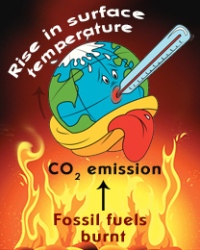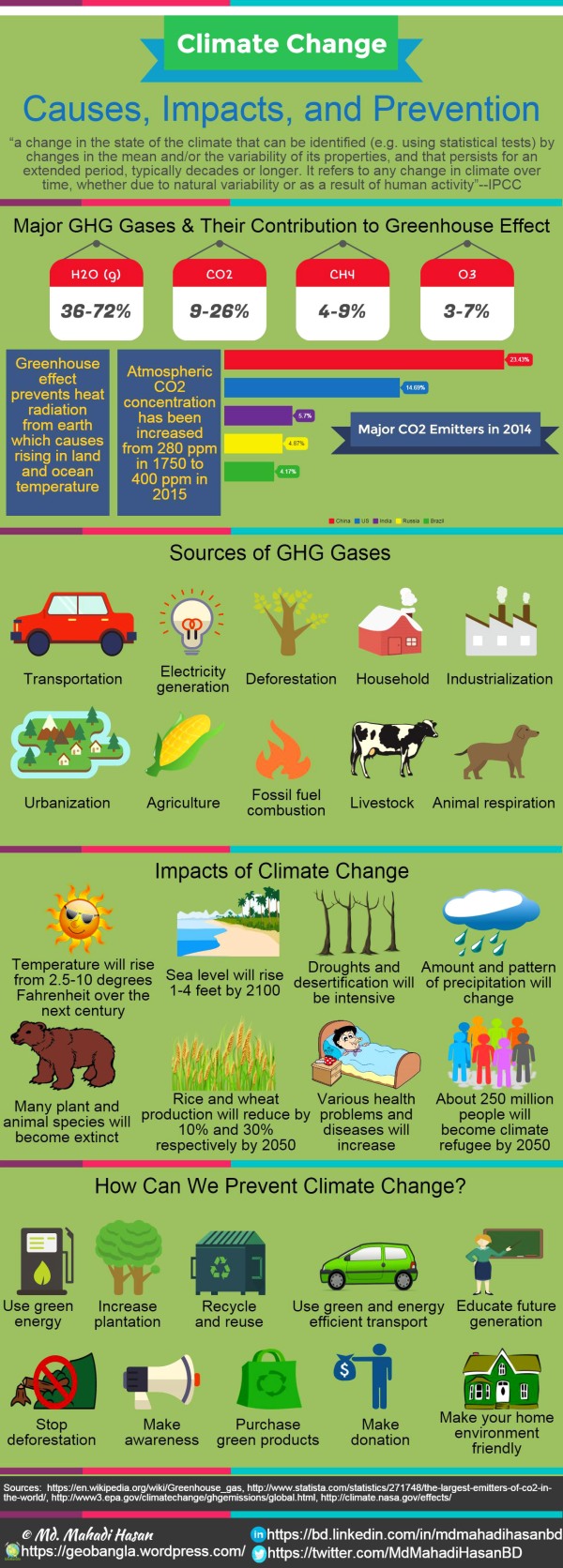
Present day agriculture is facing with twin challenges. Feeding the world with increasing population is one challenge. Anthropogenic climate change on the other hand make more hard to feed the expected nine billion people (by 2050)(Food insecurity). Its the responsibility of Agronomists, crop breeders, and other scholars to develop climate smart solutions such as climate ready crop varieties which could perform better with changing climate and climate smart options to face other challenges.
Tuesday, January 19, 2021
Greenhouse Management - ppt download
Monday, September 21, 2020
Planetary Boundaries
http://www.anthropocene.info/planetary-boundaries.php
Identifying
and quantifying planetary boundaries that must not be transgressed could help
prevent human activities from causing unacceptable environmental change.
උල්ලංගනය නොකළ යුතු ග්රහලෝක මායිම් හඳුනා ගැනීම සහ මිනුම
කිරීම
පිළිගත නොහැකි පාරිසරික වෙනසක් ඇති කිරීමේ මානව ක්රියාකාරකම් වැළැක්වීමට උපකාරී වේ.
සාරාංශය
New approach was proposed for
defining preconditions for human development
මානව සංවර්ධනය සඳහා වන පූර්ව කොන්දේසි නිර්වචනය
කිරීම සඳහා නව ප්රවේශයන් යෝජනා කර තිබේ
Crossing certain
biophysical thresholds could have disastrous consequences for humanity
සමහර ජෛව භෞතික සීමාවන් ඉක්මවා යාම
විනාශකාරී විය හැකිය
Three of nine
interlinked planetary boundaries have already been overstepped
අන්තර් සම්බන්ධිත ග්රහලෝක මායිම් නවයෙන් තුනක් දැනටමත් ඉක්මවා ගොස් ඇත
Tuesday, August 11, 2020
Reducing food waste could reduce GHG emissions
We need to answer the following questions to prove above statement
Is wasting less food a way to reduce greenhouse gas emissions?
How does cutting waste produce more food?
Saves money from buying less food. Reduces methane emissions from landfills and lowers your carbon footprint. Conserves energy and resources, preventing pollution involved in the growing, manufacturing, transporting, and selling food (not to mention hauling the food waste and then landfilling it).For more information on this subject please click following link
https://www.greenbiz.com/article/reducing-food-waste-could-dramatically-cut-ghg-emissions
Saturday, May 25, 2019
What is Climate Resilience?
As the negative impacts of climate change are increasingly felt around the world, however, it has become clear that simultaneous efforts are necessary to increase adaptive capacity and build resilience.Resilience is the capacity to recover quickly from difficulties.
Read more on this subject (click here)
.
Monday, May 13, 2019
CO2 hits record high level
Atmospheric CO2 Levels Just Hit a Scary New Milestone
What does CO2?
It is significant that so much carbon dioxide stays in the atmosphere because CO2 is the most important gas for controlling Earth's temperature. Carbon dioxide, methane, and halocarbons are greenhouse gases that absorb a wide range of energy—including infrared energy (heat) emitted by the Earth—and then re-emit it.
What is current CO2 Concentration?
Carbon dioxide concentrations have shown several cycles of variation from about 180 parts per million during the deep glaciations of the Holocene and Pleistocene to 280 parts per million during the interglacial periods. Following the start of the Industrial Revolution, atmospheric CO
2 concentration increased to over 400 parts per million and continues to increase, causing the phenomenon of global warming. As of April 2018, the average monthly level of CO
2 in Earth's atmosphere exceeded 410 parts per million. The daily average concentration of atmospheric CO
2 at Mauna Loa Observatory first exceeded 400 ppm on 10 May 2013 although this concentration had already been reached in the Arctic in June 2012.[15] It currently constitutes about 0.041% by volume of the atmosphere, (equal to 410 ppm) which corresponds to approximately 3200 billion metric tons of CO
2, containing approximately 870 billion metric tons of carbon. Each part per million by volume of CO
2 in the atmosphere thus represents approximately 2.13 billion metric tons of carbon. The global mean CO
2 concentration is currently rising at a rate of approximately 2 ppm/year and accelerating.There is an annual fluctuation of about 3–9 ppm which is negatively correlated with the Northern Hemisphere's growing season. The Northern Hemisphere dominates the annual cycle of CO
2 concentration because it has much greater land area and plant biomass than the Southern Hemisphere. Concentrations reach a peak in May as the Northern Hemisphere spring greenup begins, and decline to a minimum in October, near the end of the growing season.
Since global warming is attributed to increasing atmospheric concentrations of greenhouse gases such as CO
2, scientists closely monitor atmospheric CO
2 concentrations and their impact on the present-day biosphere. The National Geographic wrote that the concentration of carbon dioxide in the atmosphere is this high "for the first time in 55 years of measurement—and probably more than 3 million years of Earth history." The current concentration may be the highest in the last 20 million years.
Carbon dioxide in the Earth's atmosphere was measured at a record high of 415 parts per millions (ppm) on Friday, scientists said.
The reading was made by the Mauna Loa Observatory in Hawaii, which has maintained a rolling measure of CO2 levels since 1958.
Read More
https://thehill.com/policy/energy-environment/443389-carbon-dioxide-levels-hit-new-landmark-at-415-ppm-highest-in-human?fbclid=IwAR3liC0D2dpFfol0WpRb07Zz9QaAN9o75C0sVS7vfF8KTx4dbJWi5q4morc
Saturday, April 13, 2019
Sri Lanka ranked as one of the highly
climate change affected countries
Realizing the impending necessity to address the impact of climate change on the Sri Lanka nation, the Sri Lankan Government has collaborated with the Asian Development Bank (ADB) and World Bank to develop a national adaptation strategy to mitigate the negative effects of a changing climate.
Building Sri Lanka’s Resilience
to Climate Change
Click to the link below
https://www.worldbank.org/en/news/feature/2018/09/21/building-sri-lankas-resilience-to-climate-change
Climate change and Sri Lanka.
How big a threat?
As per the publication “In
the next 55 years the greatest threat to Sri Lanka will be not from war,
but from climate change. Sri Lanka is particularly vulnerable to rising
sea levels and weather-related disasters have the potential to set back
any gains made in agriculture, fisheries and even services such as
tourism”
In addition the following article is extracted from the report titled ‘Intended
Nationally Determined Contributions’ by the Ministry of Mahaweli
Development and Environment, Sri Lanka,
“As a small island in the Indian Ocean, the coastal region of Sri Lanka
is susceptible to changes in sea level. The 2004 tsunami has indicated
that low-lying plains in the coastal zone will be vulnerable to any
future rise in sea level Emerging evidence from various sources suggest
that climate change could alter natural systems connected to the water
cycle, the ecosystems and the bio-diversity of the country. This could
lead to decline of various ecosystem services that are indispensable for
the welfare of human population.”
Therefore climate change does seem to be an issue of concern for Sri Lanka.
Click to the link below to read more
How big the threat is?
Friday, April 5, 2019
Reasons to Worry About Climate Change

As per the recent UN report, climate change sounded an alarming note: The
problem is real, it is growing and the worst is yet to come. We need to think of
the dire consequences of not reducing greenhouse gases as the Top 10
Reasons to Worry About Climate Change.
For more information pl refer
https://www.usnews.com/news/slideshows/top-10-reasons-to-worry-about-climate-change?onepage
Impacts of Climate Change Will Make You More Worried
Climate change is one of the greatest environmental, social, and economic threats that the world faces today. With 160 million people, Bangladesh is one of the largest deltas in the world which is highly vulnerable to natural disasters because of its geographical location, flat and low-lying landscape, population density, poverty, illiteracy, lack of institutional setup etc. Moreover, the adverse effects of climate change – especially high temperature, sea-level rise, cyclones and storm surges, salinity intrusion, heavy monsoon downpours etc. has aggravated the overall economic development scenario of the country to a great extent.
You Need to Know What Climate Change Actually Means
Intergovernmental Panel on Climate Change (IPCC) defines climate change as “a change in the state of the climate that can be identified (e.g. using statistical tests) by changes in the mean and/or the variability of its properties, and that persists for an extended period, typically decades or longer. It refers to any change in climate over time, whether due to natural variability or as a result of human activity”.Climate change generally refers to global changes in temperature, wind, precipitation, the length of seasons as well as the strength and frequency of extreme weather events like droughts and floods.
Warming of the climate system is unequivocal, as is now evident from observations of increases in global average air and ocean temperatures, widespread melting of snow and ice and rising global average sea level.
The period from 1983 to 2012 was likely the warmest 30-year period of the last 1400 years in the Northern Hemisphere. The globally averaged combined land and ocean surface temperature increased about 0.85°C over the period from 1880 to 2012. Increases in sea level are consistent with warming. Over the period 1901 to 2010, global mean sea level rose by 0.19m per year (IPCC: Climate Change 2014: Synthesis Report).
What Are The Causes of Climate Change?

The world climate is changing mostly because of greenhouse effect. Water vapor (H2O), carbon dioxide (CO2), CFC, methane (CH4), nitrous oxide (N2O) etc. are common greenhouse gases. China, USA, India, Russia, and Brazil are the major greenhouse gas emitters.
The heat of the sun usually goes back to the outer space by radiation. But the greenhouse effect prevents the radiation of the heat. For this reason the average temperature of the world is increasing. The main causes of greenhouse gas emissions are:
Anthropogenic Greenhouse Gas (GHG) Emissions:
Anthropogenic GHG emissions have increased since the pre-industrial era, driven largely by economic and population growth, and are now higher than ever. Global GHG emissions have been increased about 70% between 1970 and 2012. Between 1750 and 2011, cumulative anthropogenic CO2 emissions to the atmosphere were 2040 ± 310 GtCO2.Fossil Fuel Combustion:
Emissions of CO2 from fossil fuel combustion and industrial processes contributed about 78% of the total GHG emissions increase from 1970 to 2010.Deforestation and Urbanization:
Everyday over 5500 acres of rain forest are destroyed resulting about 0.4% rise of CO2 level per year.Impacts of Climate Change in Bangladesh
Bangladesh experiences different types of Natural Disasters almost every year because of the Global Warming as well as climate change. More than 100 types of changes have been observed in the environment of Asia because of climate change. Bangladesh is under great threat of climate change because of its geographic location. The probable threats to Bangladesh are:Disappearing Seasons of Bangladesh:
The seasons of Bangladesh are disappearing due to climate change. Summer and rainy season are prolonging while winter season is shrinking. Autumn and Dewy season are vanishing.Flooding in Coastal Areas:
Almost 80% of the total area of the country is prone to flooding. According to IPCC, the sea level of the Bay of Bengal will be increased about one meter by this century. As a result a huge amount of coastal area of Bangladesh will be submerged under water.Natural Disasters:
Flood, cyclone, drought, river bank erosion etc. will be increased and intensified due to the change of climate.Crop Production and Food Security:
The average temperature of Bangladesh will be increased up to 2 degree Celsius by the year of 2050 due to global warming. It will reduce the production of rice up to 10% and wheat up to 30% due to the shortage of water for irrigation.Fisheries and Forests:
The fisheries sector has also experienced an adverse effect because of the impacts of climate change. There are around 260 species of fish in the country and almost all the varieties are sensitive to specific salt and freshwater conditions.About 75% area of mangrove forest, the Sundarban, will be submerged if the sea level rises up to 45cm. If the seal level rises over 1 meter, the whole mangrove forest will be submerged under sea water.



